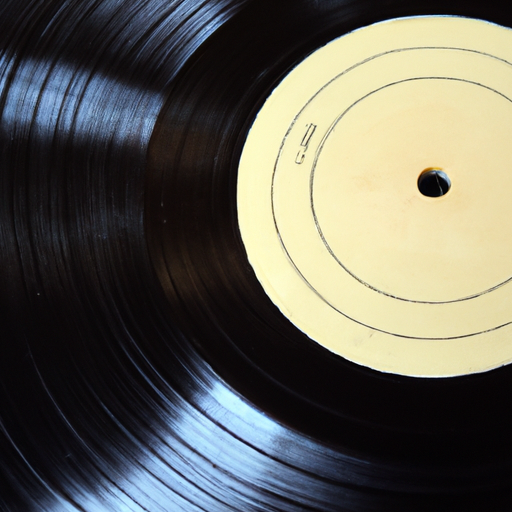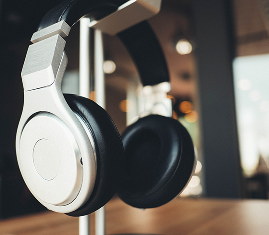In the ongoing debate between audio enthusiasts, the choice between FLAC and MP3 has long been a point of contention. Many argue that the true quality of a song lies in the source material, and that the type of audio file used can significantly affect the listening experience. This article will explore the impact of source material on audio quality, comparing the lossless FLAC format with the compressed MP3 format. From the intricacies of sound reproduction to the practical implications for everyday listeners, we will uncover the crucial factors that determine the optimal choice for your favorite tunes.
Understanding MP3 and FLAC formats
Defining MP3
MP3, which stands for MPEG Audio Layer III, is a widely-used audio compression format. It utilizes a lossy compression algorithm to significantly reduce the file size of audio files while maintaining an acceptable level of audio quality. MP3 files are known for their widespread compatibility and portability, making them the preferred format for many music enthusiasts and casual listeners.
Defining FLAC
FLAC, short for Free Lossless Audio Codec, is a lossless audio compression format. Unlike MP3, which sacrifices some audio quality in exchange for smaller file sizes, FLAC is designed to preserve the original audio fidelity without any significant loss. This makes FLAC an ideal choice for audio enthusiasts and professionals who prioritize the highest possible audio quality.
History and development of these formats
The development of both MP3 and FLAC formats can be traced back to the 1990s when digital audio technology started gaining momentum. MP3 was developed by the Moving Picture Experts Group (MPEG), while FLAC was created by a team of developers led by Josh Coalson. MP3 quickly gained popularity due to its balance between file size reduction and audio quality, while FLAC emerged as a response to the demand for lossless encoding and playback capabilities.
Technical differences between MP3 and FLAC
Explanation of lossy and lossless formats
MP3 is a lossy format, which means that it achieves compression by discarding certain audio information that is deemed less important to the overall listening experience. In contrast, FLAC is a lossless format that retains all the audio data from the original source, resulting in a perfect replica of the original audio.
Quality comparison between MP3 and FLAC
When it comes to audio quality, FLAC surpasses MP3 due to its lossless nature. FLAC files offer audio resolution identical to that of the source material, providing a more accurate and immersive listening experience. In contrast, MP3 files sacrifice some audio quality to achieve smaller file sizes, resulting in a loss of subtle details and nuances in the music.
Bitrate differences and its impacts
Bitrate is a measure of the amount of data used to represent a unit of audio. FLAC files have a higher bitrate compared to MP3 files, as they retain all the audio information from the source uncompressed. This higher bitrate translates to larger file sizes for FLAC files. On the other hand, MP3 files have a lower bitrate since they discard certain audio information during compression, resulting in smaller file sizes. The bitrate differences can impact the overall audio quality, with higher bitrates generally offering better fidelity and more accurate representation of the original source material.
Quality impact on source material
Influence of source material on resulting audio quality
The quality of the original source material greatly impacts the audio quality of both MP3 and FLAC files. If the source material is of high quality, with a wide dynamic range, accurate instrument separation, and minimal distortion, both formats can deliver exceptional audio quality. However, if the source material is of lower quality, with inherent flaws or imperfections, the limitations of MP3’s lossy compression may become more noticeable, resulting in a perceptible degradation of audio quality.
Role of encoding and decoding in preserving source material integrity
The process of encoding and decoding audio files plays a crucial role in preserving the integrity of the source material. In the case of MP3, the lossy compression algorithm analyzes the audio data and discards certain elements based on their perceived importance. During decoding, these discarded elements cannot be fully recovered, leading to a loss of audio quality. On the other hand, FLAC’s lossless compression algorithm preserves all the audio data during encoding and allows for a full reconstruction of the original audio during decoding, ensuring the highest fidelity to the source material.
Understanding the conversion process
How MP3 encoding works
MP3 encoding involves analyzing the audio data and applying mathematical algorithms to compress the file size while maintaining an acceptable level of audio quality. This compression is achieved by removing redundant and less important audio information, such as imperceptible frequencies and background noise. The resulting MP3 file is a compact representation of the original audio, making it suitable for various applications such as streaming and portable playback.
How FLAC encoding works
FLAC encoding operates based on a different principle compared to MP3. Instead of discarding audio information, FLAC uses advanced algorithms to compress the file size without any loss in audio quality. This is achieved through various techniques, including prediction coding and entropy coding, which optimize the representation of the audio data and eliminate redundancy. The resultant FLAC file is an exact replica of the original audio, allowing for perfect reconstruction during decoding.
Issues related to converting one format to another
When converting audio files from one format to another, certain considerations must be taken into account. Converting a FLAC file to MP3 involves a lossy compression process, resulting in a further reduction in audio quality. On the other hand, converting an MP3 file to FLAC does not improve the audio quality since the discarded audio information cannot be recovered. Therefore, it is important to choose the appropriate format for encoding based on the intended usage and to avoid unnecessary format conversions that may degrade the audio quality.
File size and storage implications
How the file size varies between MP3 and FLAC
The file size of audio files varies significantly between MP3 and FLAC formats due to their contrasting compression methods. MP3 files are considerably smaller compared to FLAC files since they discard audio data during compression. The exact bitrate used during encoding directly influences the file size, with higher bitrates resulting in larger MP3 files. In contrast, FLAC files retain all the audio data, resulting in larger file sizes compared to MP3 at equivalent bitrates.
Impact of these differences on storage space utilization
The differences in file size between MP3 and FLAC have a direct impact on storage space utilization. MP3’s smaller file size makes it more suitable for applications with limited storage capacity, such as portable devices. FLAC’s larger file size demands more storage space but ensures the preservation of the original audio quality. Therefore, the choice between MP3 and FLAC depends on the available storage capacity and the priority placed on audio quality.
Cost implications of storage decisions
The cost implications of storage decisions may also influence the choice between MP3 and FLAC formats. Since FLAC files require more storage space, investing in larger-capacity storage devices or cloud storage solutions may incur additional costs. On the other hand, MP3 files’ smaller size allows for greater storage efficiency and flexibility, potentially reducing storage-related expenses. It is essential to consider the cost-benefit trade-off between storage capacity and audio quality when making storage decisions.
Compatibility with playback devices and software
List of MP3 compatible devices and software
MP3’s widespread popularity and long-standing presence in the market ensure compatibility with a vast range of playback devices and software. Virtually all modern smartphones, tablets, portable media players, and computers support MP3 playback. In addition, numerous audio editing and media player software applications are designed specifically for handling MP3 files, offering an array of features and functionalities for managing and enjoying digital audio content.
List of FLAC compatible devices and software
FLAC’s growing popularity among audio enthusiasts has led to broader support across a variety of playback devices and software. Many high-end digital audio players, home audio systems, and media player software now include native support for FLAC playback. Additionally, several audio editing and conversion software applications enable seamless integration and manipulation of FLAC files, allowing for greater control and flexibility in audio workflows.
Potential issues and solutions for compatibility
Despite the increased compatibility of both MP3 and FLAC formats, some potential compatibility issues may arise. Certain older playback devices or software applications may not support FLAC playback due to hardware or software limitations. In such cases, converting FLAC files to other widely supported formats, such as WAV or ALAC, can ensure compatibility while retaining high audio quality. Similarly, some older devices or software may have limited support for certain MP3 features or specific bitrates, requiring adjustments or conversions to ensure optimal playback.
The role of bit depth and sample rate in FLAC and MP3
The function of bit depth and sample rate
bit depth and sample rate are essential parameters that determine the audio quality and fidelity for both FLAC and MP3 formats. Bit depth refers to the number of bits used to represent the amplitude of each audio sample, while sample rate indicates the number of samples taken per second to recreate the continuous audio waveform. Higher bit depth and sample rates contribute to a more accurate representation of the original audio, allowing for greater dynamic range and improved resolution.
Impact of bit depth and sample rate on audio quality
The impact of bit depth and sample rate on audio quality is evident in the clarity, detail, and depth of the reproduced sound. Higher bit depths (such as 24-bit) offer a wider dynamic range and improved accuracy in representing subtle audio nuances, resulting in a more immersive listening experience. Similarly, higher sample rates (such as 96 kHz or 192 kHz) capture more audio information and allow for better preservation of high-frequency content, resulting in increased audio fidelity.
How MP3 and FLAC handle bit depth and sample rate
MP3 and FLAC handle bit depth and sample rate differently due to their contrasting compression methods. MP3 files typically use a bit depth of 16 bits and a sample rate of 44.1 kHz, which is the standard for CD audio. This lower bit depth and sample rate are sufficient for most listeners but may not capture the full potential of high-resolution audio. FLAC, on the other hand, supports bit depths of up to 32 bits and sample rates of up to 655,350 Hz, allowing for the preservation of the highest quality audio material.
Legal and Licensing issues
MP3 licensing controversies
MP3 has been subject to several licensing controversies throughout its history. The format was initially patented by the Fraunhofer Institute and Thomson, leading to licensing requirements for developers and manufacturers who wished to use MP3 technology. The patent holders required licensing fees for the use of MP3 in commercial products, leading to criticism and disputes regarding the accessibility and openness of the format.
FLAC and the open-source license
FLAC, in contrast, follows an open-source model and operates under the Xiph.org Foundation. The open-source license allows for the free use, distribution, and modification of FLAC technology without the need for licensing agreements or fees. This has contributed to the widespread adoption of FLAC by music enthusiasts, audio professionals, and software developers who value the transparency and accessibility of the format.
How licensing influences format usage
The licensing models associated with MP3 and FLAC have had a significant impact on their respective usage and adoption. MP3’s early patent licensing requirements made it more challenging for developers and manufacturers to incorporate MP3 technology into their products without incurring additional costs. On the other hand, FLAC’s open-source license encouraged broader adoption and support, leading to its popularity among audio enthusiasts and professionals who seek open and accessible technology solutions.
Popularity and usage in the music industry
General preference for FLAC or MP3 in music production
In the music production industry, the preference between FLAC and MP3 depends on various factors, including the target audience, distribution platforms, and desired audio quality. For high-fidelity recordings and mastering purposes, FLAC is often favored due to its lossless nature, allowing for accurate monitoring and post-production manipulation. However, when it comes to final distribution and widespread consumption, MP3 is still the standard choice due to its compatibility, smaller file size, and broader support.
Trends in music listener preferences
Music listener preferences have exhibited a gradual shift towards higher audio quality in recent years. While MP3 remains popular due to its ubiquity and convenience, a growing segment of music enthusiasts are demanding higher-quality audio formats such as FLAC or even uncompressed WAV files. This trend is evident in the emergence of dedicated high-resolution audio platforms and the increasing availability of lossless streaming services, catering to the demands of listeners who value optimal audio fidelity.
Impact on music artists and their production choices
The evolving landscape of audio formats directly impacts music artists and their production choices. Artists must balance the desire for the highest audio quality with the practical considerations of distribution and listener preferences. While mastering and preserving high-quality recordings in formats like FLAC allows for flexibility and future-proofing, the majority of artists still rely on MP3 for broader accessibility and easy distribution across various platforms. As listener preferences continue to evolve, artists may be prompted to adapt their production choices and explore new formats to meet the demands of their audiences.
Future developments and trends in audio formats
Emerging audio formats
As technology advances, new audio formats are continually being developed to meet the evolving needs and expectations of audio enthusiasts and professionals. These emerging formats aim to provide even higher levels of audio quality, enhanced compression efficiency, and improved compatibility across platforms. Examples of emerging audio formats include MQA (Master Quality Authenticated), DSD (Direct Stream Digital), and Opus.
Projected developments for FLAC and MP3
Moving forward, FLAC is expected to maintain its position as a prominent lossless audio format, especially among music enthusiasts who prioritize audio fidelity. Ongoing advancements in compression algorithms and processing power may lead to improvements in compression efficiency without sacrificing quality, making FLAC even more appealing for various applications. MP3, on the other hand, will likely continue to be widely used for its small file size and compatibility, although its dominance may gradually decline in favor of higher-quality formats.
The role of technology advancement in shaping future audio formats
Technology advancement plays a pivotal role in shaping future audio formats. Faster processors, increased storage capacities, and more efficient compression algorithms are driving the development of formats capable of delivering unparalleled audio quality while maintaining practical file sizes. Additionally, advancements in internet bandwidth and streaming technologies are enabling the widespread adoption of high-resolution audio streaming, paving the way for formats that prioritize audio fidelity and immersive experiences.
In conclusion, understanding the differences between MP3 and FLAC formats allows us to make informed decisions regarding audio quality, file size, storage, and compatibility. While MP3 continues to be the most widely used audio format due to its portability and compatibility, FLAC offers an unparalleled listening experience for those who prioritize audio fidelity. The impact of source material, the conversion process, and the role of bit depth and sample rate further contribute to the nuanced differences between these formats. As technology advances, it is essential to stay informed about emerging audio formats and their potential impact on the music industry and our listening experiences.










